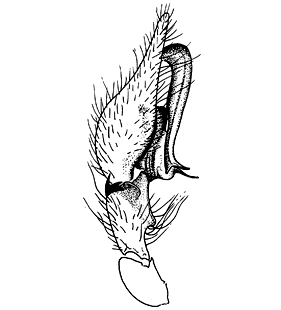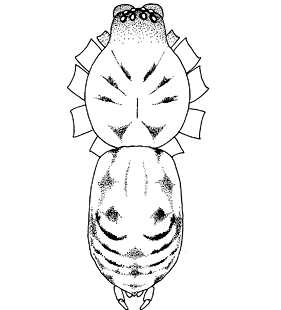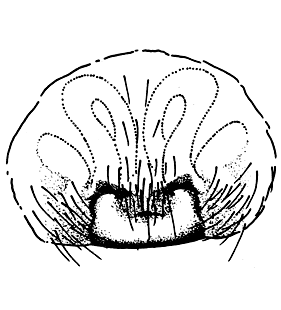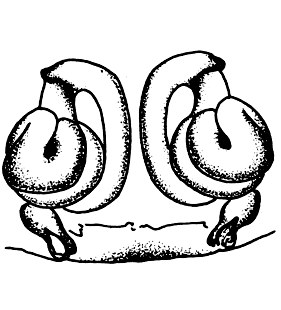Tegenaria ramblae Barrientos, 1978
Beschreibung
Männchen
Palpus: Cymbium mit dorsaler Reihe von Trichobothrien. Distaler Teil des Konduktors parallel zum Cymbium stehend. Dorsaler Ast der retrotibialen Apophyse mit zwei oder drei verlängerten stachelartigen Spitzen. Keine Tegularapophyse.
Prosomalänge: 2.1-3.6 mm, Prosomabreite: 1.6-2.8 mm.
Weibchen
Palpentarsus mit dorsaler Reihe von Trichobothrien. Epigyne: Deutlicher band- oder barrenförmiger posteriorer Sklerit mit konkavem anteriorem Rand. Posteriorer Sklerit mit geradem posteriorem Rand, in der Mitte fast halb so lang wie breit.
Prosomalänge: 3.5 mm, Prosomabreite: 2.6 mm.
Verbreitung
Abbildungen
Verbreitungsnachweise
"No reference" bedeutet nicht, dass die Art in diesem Land nicht vorkommt, sondern dass wir die Referenz hierfür noch nicht eingefügt haben. Wir arbeiten daran.
Literatur
Barrientos J A (1978) La colección de araneidos del Departamento de Zoología de la Universidad de Salamanca, I: familia Agelenidae (Araneae). Boletín de la Asociación Española de Entomología 2: 215-221 ![]()
Barrientos J A, Ribera C (1992) Adiciones a la fauna de Portugal. Descripción del macho de Tegenaria ramblae Barrientos, 1978 (Araneae, Agelenidae). Boletim da Sociedade Portuguesa de Entomologia, Suplemento 3: 119-128 ![]()
Branco V V, Morano E, Cardoso P (2019) An update to the Iberian spider checklist (Araneae). Zootaxa 4614: 201-254 ![]()
Danflous S, Déjean S, Guerbaa K, Jacquet C, Lecigne S, Montagne D, Montardi Y, Villepoux O (2020b) De araneis Galliae IV. Actualisation du référentiel des araignées de France – première note. Espèces absentes de France ou mises en nomen dubium. Bulletin de l'Association Française d'Arachnologie 5: 10-32 ![]()
Lavery A (2019) A revised checklist of the spiders of Great Britain and Ireland. Arachnology 18: 196-212 ![]()
WSC (2024) World Spider Catalog. Version 25.0. Natural History Museum Bern, online at http://wsc.nmbe.ch (22.01.2024) doi: 10.24436/2 ![]()




